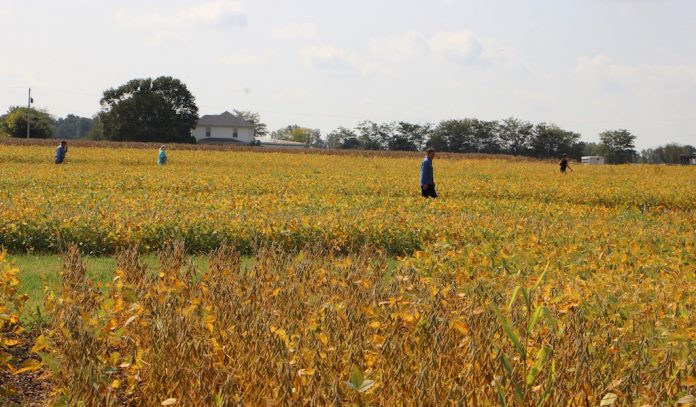
Prior to the Civil War, the states that lay to the east of the virgin lands of the western frontier were aware that they suffered an agricultural disadvantage.
Their soil would not, unaided, grow such crops as the newer states. In the older states, much of the land had been “cropped to death.”
Discerning farmers had begun to advocate the scientific study and teaching of agriculture, but legislative response to their pleas had not been forthcoming.
Congressman from Vermont
The author and successful promoter of the Morrill Land Grant College Act of 1862 was Justin Smith Morrill, a congressman from Vermont. Morrill was first elected to national office in 1855 as a Whig. With the demise of that political party, he helped to found the Republican Party in the Green Mountain state.
In the House, he served on both the Committee on Territories and the Committee on Agriculture and finally became chairman of the powerful Ways and Means Committee in 1861. In 1862, he was elected to the Senate and served there until his death in 1898.
Several attempts to use land revenues to aid public education had been made before Morrill’s legislation. The Ordinance of 1785 provided that the 16 section in each township was to be set aside for educational purposes. That money was for public schools for children but not for adults.
In 1848, when the Oregon Territory was organized, section 36 was added to section 16 in each township for common schools. In 1841, the Distribution-Preemption Act turned over to the states for internal improvements, one-half million acres of land. Proceeds from the sale of these lands were to be used for public schools. In 1849 and again in 1850, additional monies were allocated to public schools.
Education and agriculture
Morrill’s approach was different. He was interested in both education and agriculture. He regretted the fact that, since most existing institutions taught on the classical plan, the farmers, mechanics and others were not scientifically trained and in most cases they were doomed to the haphazard methods of self-education.
In 1856, Morrill introduced a resolution that the Committee on Agriculture investigate the possibility of establishing several agricultural schools patterned after West Point and Annapolis. There was no interest, and the concept died in committee.
One year later, he introduced a bill that public lands be donated to the states for developing colleges to train students in agriculture and mechanical arts. That land was to be allocated to each loyal state in the Union, a quantity of 20,000 acres for each Senator and Representative the state had in Congress, and 60,000 acres to each territory. Proceeds from the sale of the land were to be used to support a college. Within a period of five years, after the passage of the bill, a college had to be established.
When the bill was presented to both Houses of Congress, much opposition appeared. The South argued that it was inexpedient and unconstitutional, and the Western states believed that since the grants were to be made on the basis of population the Eastern states had an unfair advantage. Others argued that land speculators would acquire large holdings and profits when land values increased.
But in spite of these objections, the bill passed both Houses by narrow margins. President James Buchanan then vetoed the Morrill Act. He viewed the bill as unconstitutional and deprived the government of needed revenue form the land sales. He also argued that the federal government could not compel the states to use the funds for higher education purposes. An override veto in the House failed to get the necessary two-thirds vote.
Second attempt
Unwilling to accept defeat, Morrill introduced a second bill Dec. 16, 1861, in the Civil War’s 37th Congress. This bill plus the Homestead Act and the Pacific Railroad Act were passed quickly since most of the Southern delegates had resigned their seats in congress and headed home.
The Morrill Act now increased the acreage to 30,000 for each Senate and House member. President Abraham Lincoln signed the bill July 2, 1862.
Most of the “land grant” colleges received not land but scrip, which they used to purchase public land at $1.25 per acre. Under the terms of the act, 11 states received 1,769,440 acres of land. States later admitted to the Union received similar grants.
Twenty-seven states eventually received money instead of land that amounted to 8,000,000 acres. The older states were authorized to their acreage anywhere in the West. In all, the states received 140,000,000 acres through the Morrill Bill.
A second Morrill Land Grant Act was passed in 1890 stipulating that Congress was to make regular appropriations for “land grant” colleges. By 1960, there was at least one such institution in every state.
Land grant institutions have played a special role in establishing a system of education that rests on a massive body of official publications. The land grant colleges taught agriculture, mechanics and military science as well as the established curriculum.
The Morrill Acts marked the beginning of a fruitful type of federal policy whereby national and state governments have developed sound cooperative programs. Land-grant institutions are indeed “democracy’s colleges.” That’s your history!












